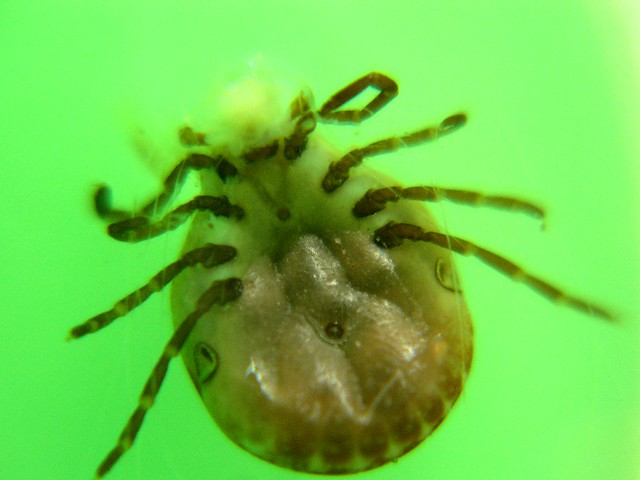Lyme disease is caused by an organism known as a spirochete, which is a coiled rod-shaped bacterium and named Borrelia burgdorferi. It is passed to dogs and people by deer ticks carrying the infection; the ticks get the infection from the white-footed mouse, which acts as a carrier. The only way a tick can transmit the bacteria is to remain attached to the animal's skin for one to two days. Unfortunately, these ticks are very small and easily can go unnoticed.
Lyme disease in dogs has been found orldwide and in ancient Chinese medical literature they actually describe a syndrome very similar to Lyme disease, thousands of years before Lyme , Connecticut was named. In the United States , more than 90% of the cases occur in the Northeast, with California and Mississippi second. Lyme disease in dogs is fairly common, but rarely seen in cats, although some cats have been infected with it.
 |
| Don't tick me off - Photo by frankieleon |
The main clinical signs of Lyme disease in dogs include a sudden yet recurring lameness that may shift from leg to leg. Sometimes this lameness is associated with a fever and depression. Occasionally you will see swollen lymph nodes. Sometimes the joints may be swollen, feel warm, and it's very painful. The dog infected will usually walk stiffly with a hunched back. Lyme disease in dogs is really very painful and they commonly are very sensitive to touch and may cry out with even the slightest touch. Many dogs with Lyme disease that were diagnosed with slipped discs in their neck and crying in pain and it was actually Lyme disease causes muscle spasms in the neck and they only improved when they were administered the appropriate antibiotic. Sometimes you will see the classic red round target lesion around a tick bite on your pet and within a few days they may show the signs of lameness, fever and sensitivity to touch. If you suspect your pet has Lyme disease, take them to the vet immediately for treatment.
Treatment
Treatment involves the use of an appropriate antibiotic, such as doxycycline, for at least three to four weeks.
Prognosis
Dogs should begin to show signs of recovery two to three days after beginning treatment. However, the disease may recur within a few weeks or months; in these cases, the dog will need to return to antibiotic therapy for extended periods.
Prevention
There is a vaccine for the prevention of Lyme disease. Quick removal of a tick also will help prevent Lyme disease because the tick must remain attached to the dog's body for one to two days before the disease can be transmitted. Consult with a veterinarian about the different tick prevention products that are available, as they can be an effective way to prevent the disease. The sooner you start treatment, the sooner your pet will be without pain.





